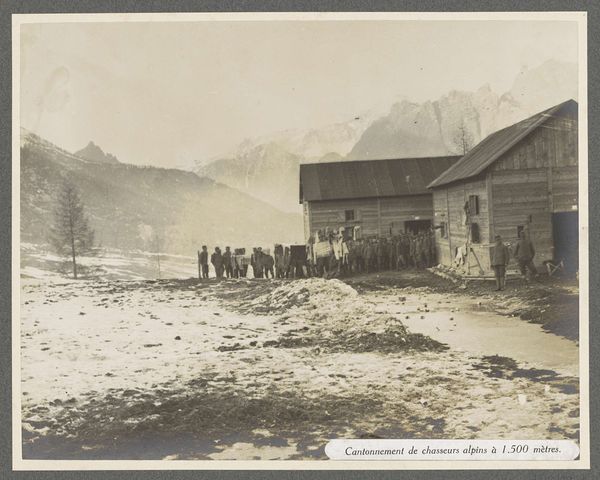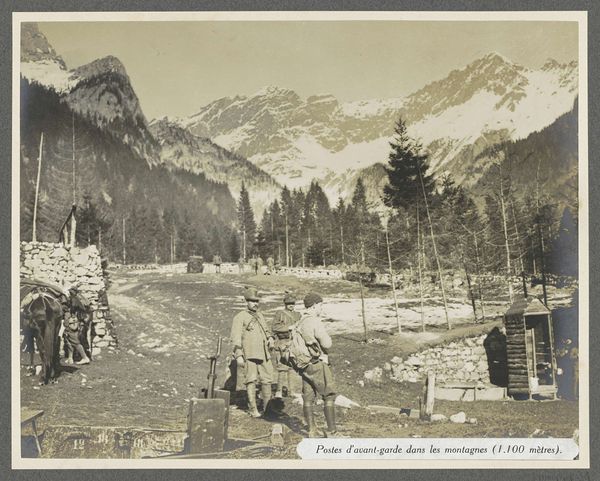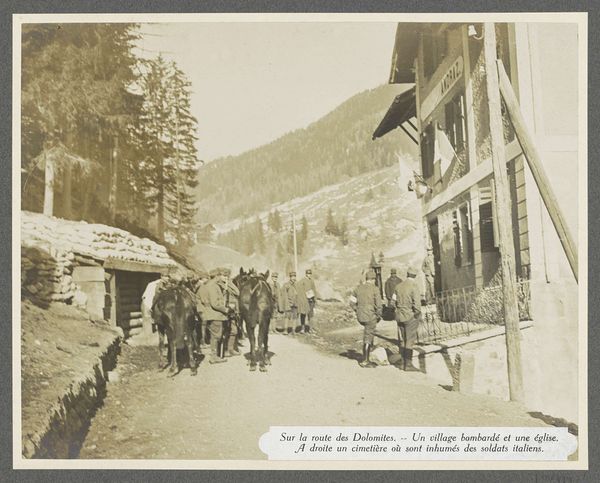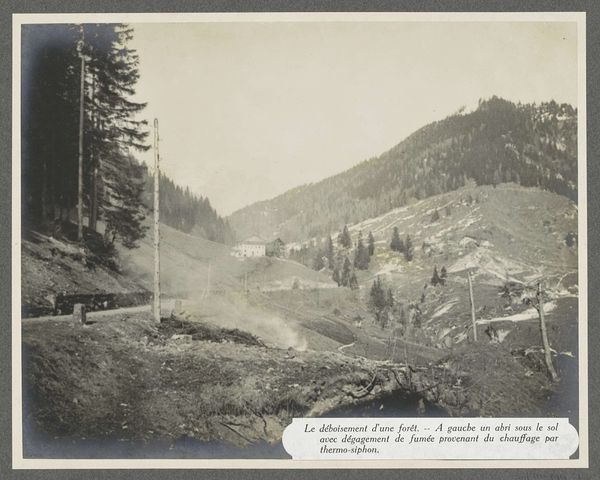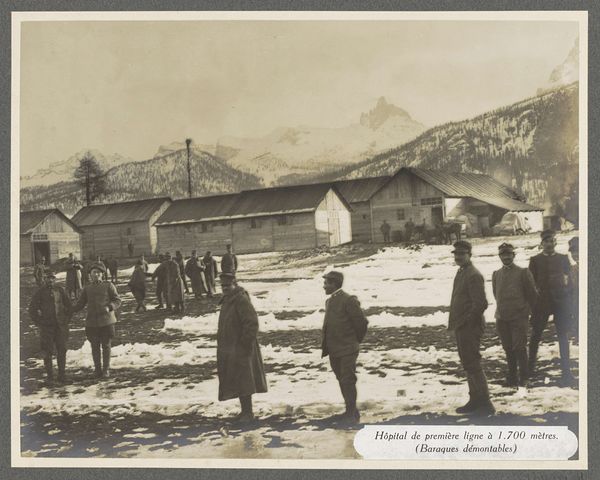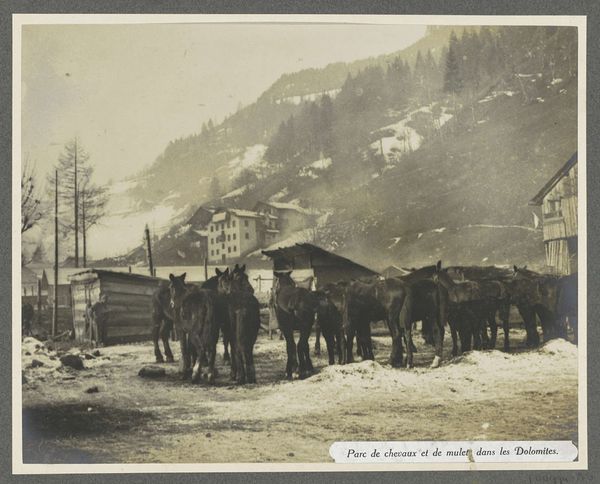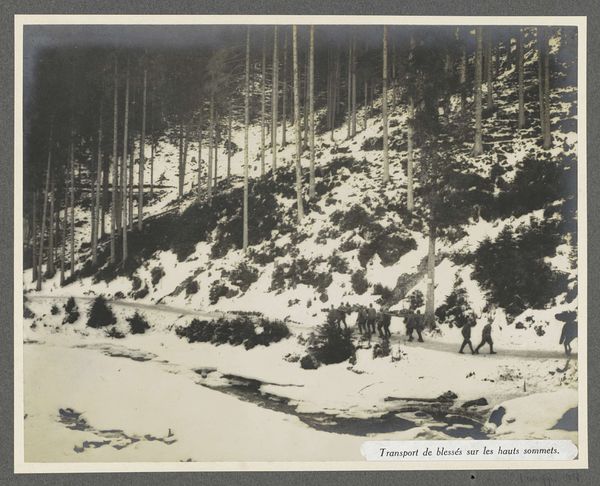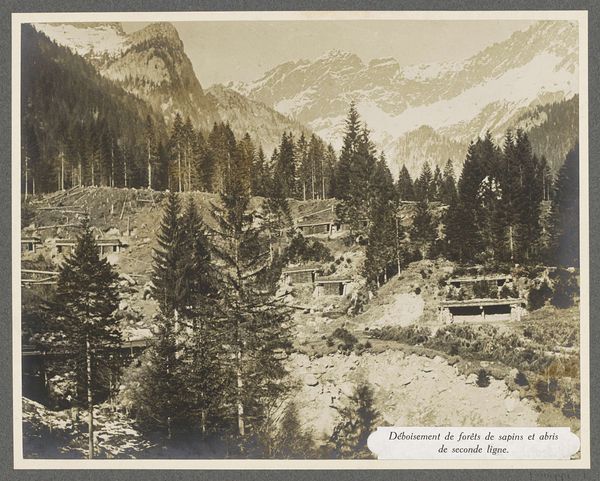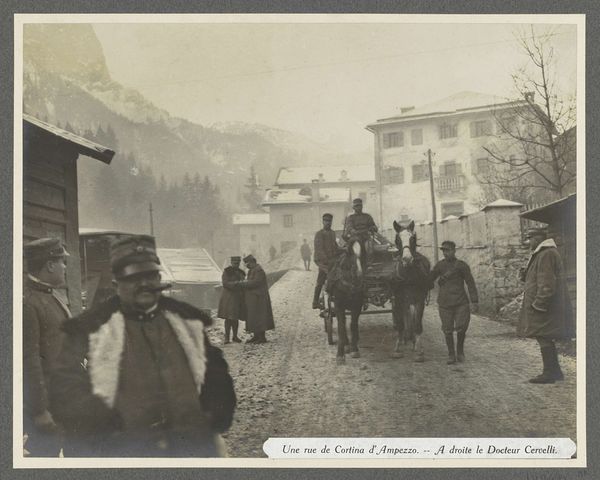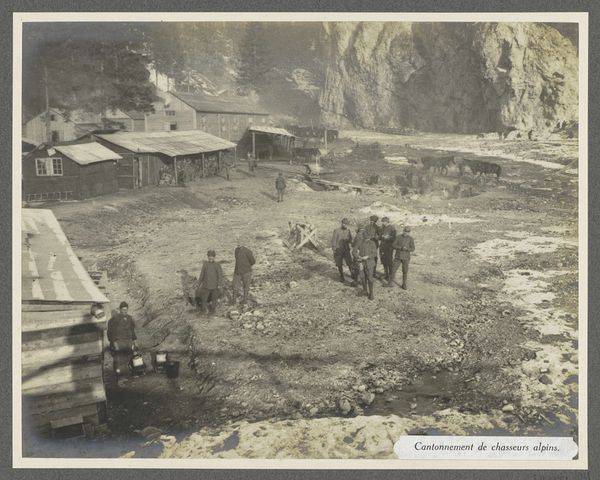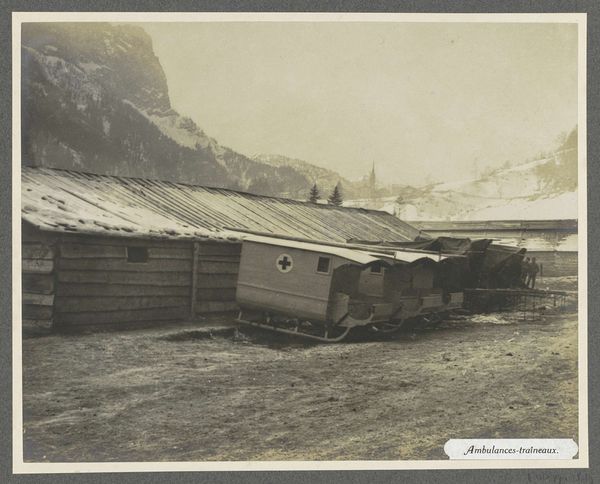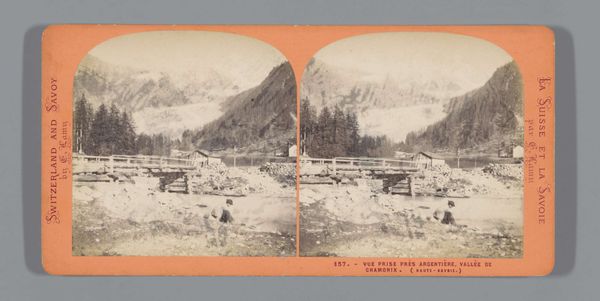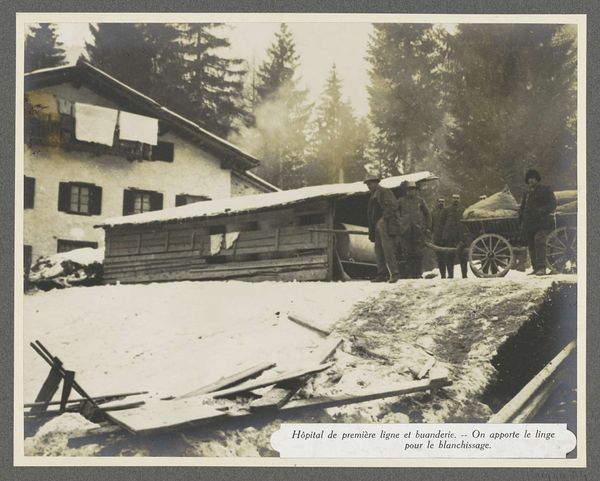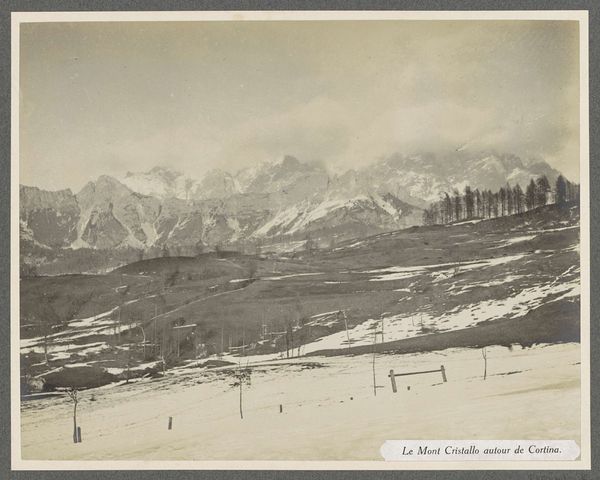
Soldaten bij een veldhospitaal achter het front in de Dolomieten, vermoedelijk Italianen 1916
0:00
0:00
photography, gelatin-silver-print
#
portrait
#
landscape
#
charcoal drawing
#
street-photography
#
photography
#
photojournalism
#
group-portraits
#
gelatin-silver-print
#
history-painting
#
realism
Dimensions: height 220 mm, width 280 mm
Copyright: Rijks Museum: Open Domain
Curator: This photograph, titled "Soldaten bij een veldhospitaal achter het front in de Dolomieten, vermoedelijk Italianen," dating to 1916, presents a sobering scene. The medium appears to be a gelatin-silver print, providing stark contrast. Editor: My initial impression is one of immense scale despite the photograph's moderate dimensions. The Dolomites loom in the background, dwarfing the figures in the foreground and underscoring their vulnerability. Curator: The composition guides the viewer's eye meticulously. The orthogonal lines formed by the building and the muddy pathway create depth, almost mimicking a stage set, while also suggesting the ordered chaos of a field hospital behind the Italian Front during World War I. Semiotically, we read this alignment as representing the cold logic of wartime, perhaps? Editor: Indeed, and considering its socio-political context, photography during wartime played a significant propaganda role. Note the soldier on the left, wearing what appears to be the uniform with the red cross symbol, immediately drawing attention and framing the compassion implied in the context. Do you think it is a constructed, controlled vision of war? Curator: I appreciate that observation. It's not a photograph of action; it’s one of quiet suffering and perhaps exhaustion. This image underscores the pervasive impact of conflict, less of documenting violence directly and more about visually presenting a zone outside violence itself but very near and very influenced. The contrast is what conveys a more pervasive meaning, don't you think? The light filtering through the overcast sky seems to almost be washing out the figures. Editor: Precisely. And thinking historically, photographs like this entered public consciousness through publications and exhibitions, constructing a specific narrative of war. They had an essential public role, influencing perception and policy—a carefully controlled visual discourse during wartime. Curator: Absolutely. When analyzing solely based on its form and photographic presentation, there is an intrinsic value in presenting a subject in its starkest representation, a key component of realist photographic approach in art. Editor: This piece offers multiple levels of understanding: we get its formal visual structures while also analyzing the social contexts and historical significance that surround this gelatin-silver print and photography of its kind. A telling reflection of humanity in the face of profound conflict.
Comments
No comments
Be the first to comment and join the conversation on the ultimate creative platform.
